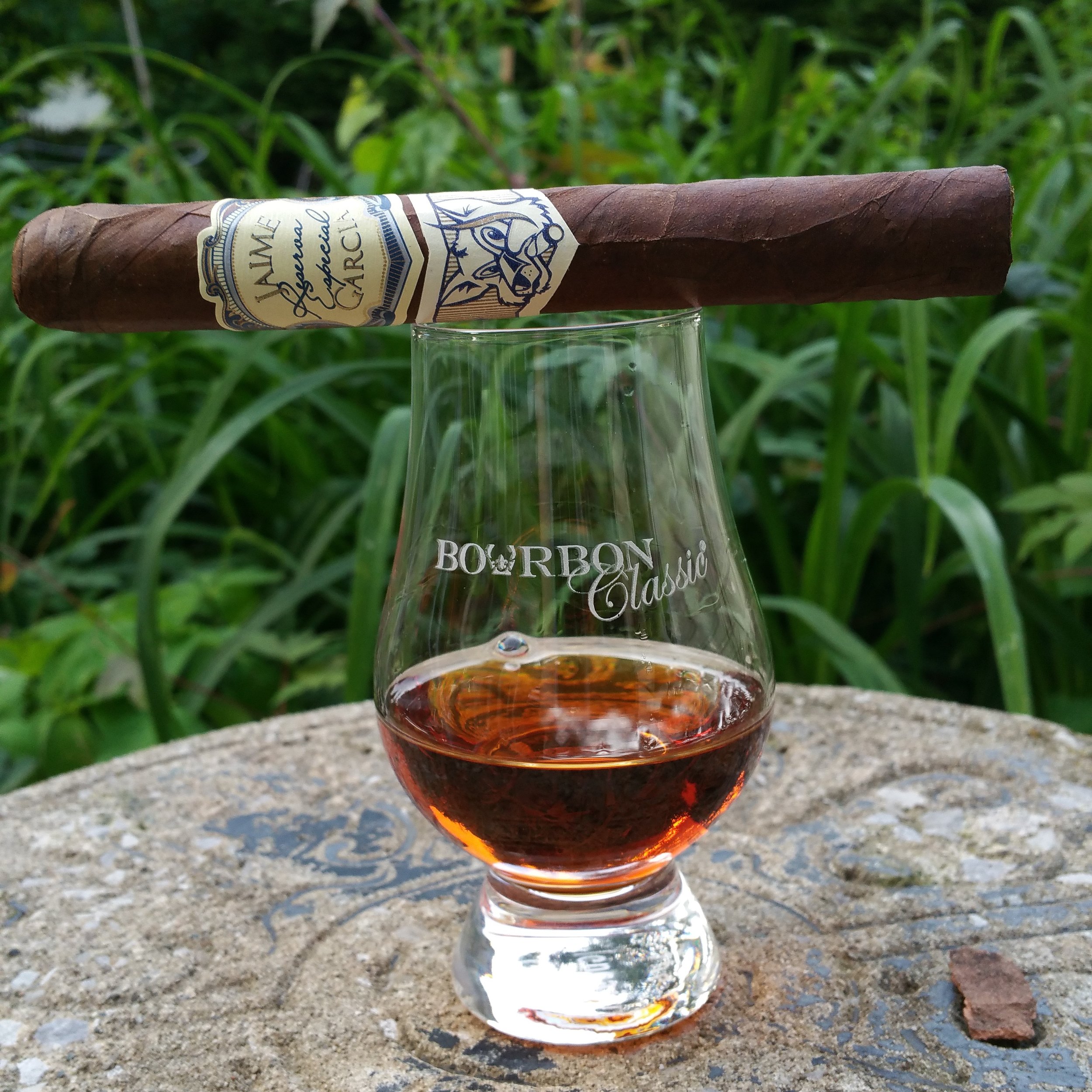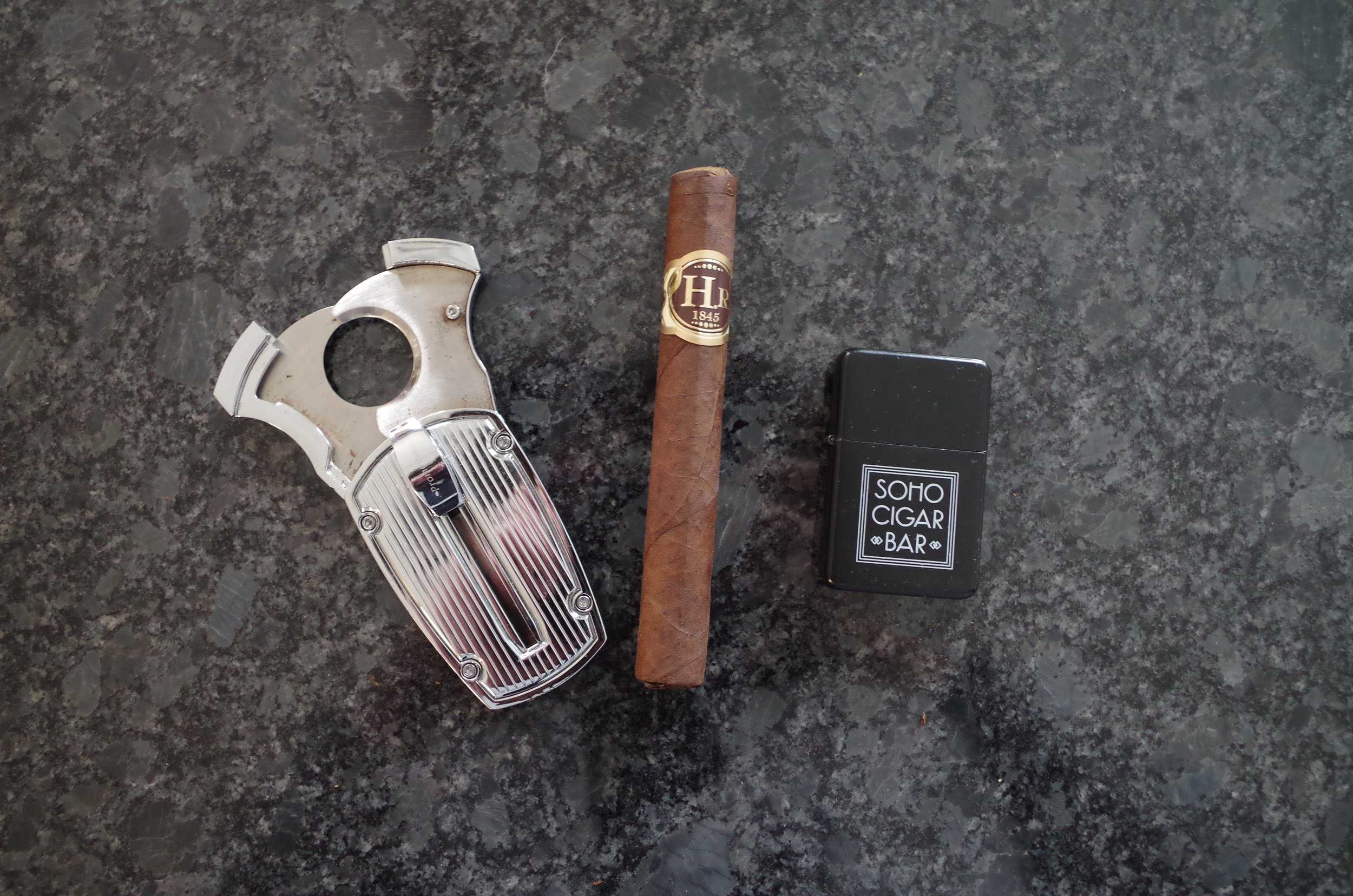Whiskey and Cigar Pairing For Beginners
Here’s a time tested method for selecting American whiskey flights to go with a variety of cigars
Photos by Maggie Kimberl
Since the New Orleans Bourbon Festival launched three years ago, I have taught classes at that event about how to pair bourbon and cigars. The people in my classes are a mix of new cigar smokers to seasoned cigar smokers and everything in between. Many have a favorite combination already, although some have never attempted to pair whiskey with their cigars. No matter their level, they always tell me they learned something new from my class.
My obsession with ‘the right way’ to pair bourbon and cigars came from repeatedly receiving the wrong information. If you ask the average cigar aficionado, that person will likely tell you to pair a full bodied cigar with a full bodied bourbon, and pair a lighter bodied cigar with a lighter bodied bourbon. This never made sense to me for two reasons: First, if you pair full bodied with full bodied there’s going to be too much going on and the strong flavor profiles could cancel each other out. Second, a light bodied bourbon paired with a light bodied cigar is unlikely to offer much nuance.
I complained about this bad advice enough that my friend and bourbon historian Michael Veach finally suggested we study it together and write about our findings. We started off with a theory that it’s best to look for flavor profiles with opposing characteristics in order to make a bourbon and cigar pairing work best. We were very methodical in our approach, studying with multiple subjects and taking notes. Most of our pairings included at least two men and two women to gather data to reflect gender differences. For the whiskeys, we rotated through a wide variety of flavor profiles, mash bills, bottle proofs, barrel entry proofs, age statements and other qualities that would affect the overall experience.
What we found was that it’s far more complicated than simply taking an ‘opposites attract’ approach, though that is a great place to start. For sweeter or earthier cigars, we discovered it’s better to pair them with something bold and spicy; while for spicier cigars, a whiskey that is heavier on the caramel side tends to compliment the earthiness of the cigar well.
For situations in which the flavor profile of either the cigar or whiskey hasn’t been tasted beforehand, it’s worthwhile to follow a very specific method, regardless of experience level. Start by choosing the whiskey, then the cigars. Of course it’s always better to taste firsthand since every palate is different, but tasting notes for both whiskey and cigars can be found online on review sites, which could be helpful in building tasting flights.
How to select an American whiskey flight for cigar pairing
Each bourbon should have different flavor profiles from mild to bold. I suggest the first bourbon to be lower proof (around 40% - 45% ABV) with a wheated mash bill, or one that is heavy on the corn ratio, because these tend to be sweeter and easier on the palate. Maker’s Mark is easily accessible and a great place to start. Next, move on to a bourbon with more of a classic flavor that is rich and full-bodied, but not too spicy or hot, such as Jim Beam Black (gold medal, 2017 New York International Spirits Competition). Then move into something more bold and spicy—a bourbon with a ‘high rye’ mash bill or even a rye whiskey is best here such as Cutwater Spirits Devil’s Share Bourbon (gold medal, 2018 NYISC).
Choosing the cigar and keeping records
Choosing a cigar is another matter entirely, and I always recommend talking to a local tobacconist. Mail order cigar companies may have great prices, but a local shop is not only a place to find recommendations, but also build a community and make new friends. Plus, a tobacconist will take the time to get to know customers and learn their preferences, or choose new selections for ones they already know.
Keeping good notes is crucial. A small pocket-sized notebook is sufficient. Write down the maker, line, and vitola of the cigar—think of it as the make, model, and trim level of a car—and also note the cost. Take a cold draw—a puff after cutting but before lighting—and write down those impressions. Take notes on the flavor profile after the first quarter of the cigar since upon first light the flavor hasn’t emerged enough to make an accurate assessment. Also note how the flavor profile of the cigar changes over time.
Putting it together
After the first quarter of the cigar, it’s time to start pairing whiskeys. The process goes like this:
Take a puff of the cigar and roll the smoke around in your mouth.
Take a sip of that first whiskey in your flight and roll that all around in your mouth as well. How does the smoke match the flavor of the whiskey?
Take a sip of the whiskey and roll it all around in your mouth, followed by another puff of the cigar. How does that whiskey mingle with the flavor profile of the cigar?
Write all these impressions in your notebook.
Repeat this process with the entire whiskey flight, then revisit the ones that left the best and worst impressions since palates change through this process. Make note of anything that was different the second time around. These notes may only take one page of a small pocket notebook, but it will be an invaluable resource months or even years from now when trying to recall what whiskey went so well with that one cigar.
It’s best to use the same whiskeys the first few times with differing flights of cigars to limit variables. Once you get the hang of this process and you have some good notes, go back through and find whiskeys that may have similar mash bills to the ones you liked and revisit that same cigar with something new.
Over the years I have found many cigars that go well with American whiskeys, and the majority of them have been Nicaraguan. Companies like Drew Estate make a vast selection of flavor profiles from which to choose, from Herrera Esteli to Liga Privada to My Uzi Weighs A Ton, each with a wide array of characteristics. Smaller producers such as Tatuaje, Warped, Alec Bradley, and Black Label Trading Company can be more difficult to find, but worth seeking out.
By the way there’s another myth to keep in mind: that you should only smoke high end cigars with high end spirits. This is utterly false. For instance, one of the biggest surprises I’ve experienced in my studies is that $22 bottle of Jim Beam Black I mentioned earlier goes well with several $20-30 cigars. I’ve paired it successfully with an Arturo Fuente Opus X Perfecxion #2, an Arturo Fuente Añejo Shark, and a Hirochi Robaina 1845.
Basically, the right cigar goes with the right whiskey, regardless of price.
To recap
Choose a flight of whiskeys of varying flavor profiles, and it’s best to select ones under 110 proof while learning the ropes.
Take detailed notes to remember what was tasted and paired together.
Talk to a tobacconist and try their recommendations.
Most importantly, don’t let anyone tell you what to like or what to try—this process is about finding out what YOU like.
Here are some sample flights to try with your next cigar:
Balcones True Blue 100 (Gold, 2018 NYISC) — a sweeter but complex corn whiskey
Larceny — a wheated bourbon that’s easy to find
Catoctin Creek Roundstone Rye — a bold and spicy rye whiskey
Ironroot Republic Hubris Corn Whiskey — another sweet corn whiskey with other complex characteristics
Jim Beam Bonded (Gold, 2018 NYISC) — a classic bourbon profile
Uncle Nearest 1856 Premium Aged Whiskey (Silver, 2018 NYISC) — a Tennessee Whiskey with rich, malty flavors and a hint of charcoal smoke
Virginia Distillery Company Port Cask Finished (Silver, 2018 NYISC) — a soft American single malt
Wild Turkey Longbranch — an easy drinking classic bourbon
Old Forester Rye — an easy sipping rye whiskey with a bit of spice
Michter’s US-1 American Whiskey — sweet with fewer oaky notes than typical bourbon since it’s aged in re-used barrels
Wilderness Trail BiB Wheated Bourbon — wheated sweet mash bourbon (yes, I did say wheated should be the first whiskey, but this one is a bitter heavier than is typical for that style)
Sagamore Spirit Cask Strength Rye Whiskey (Gold, 2018 NYISC) — bold and spicy rye


